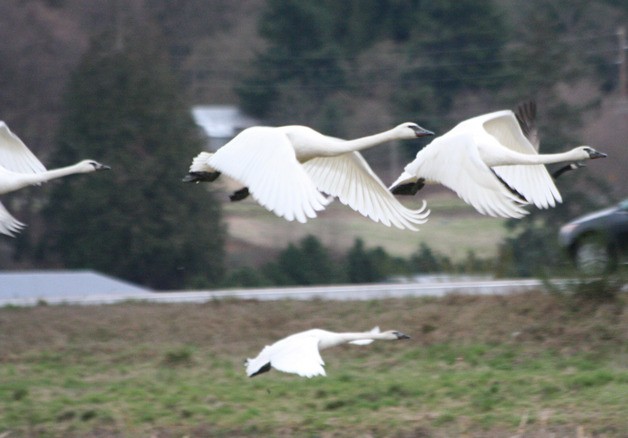The cacophony of honks rising from Dugualla Bay Farm is evidence that more trumpeter swans are wintering this year on Whidbey than ever before.
More than 100 swans have been counted by state wildlife officials at the North Whidbey spot, double the usual number.
There’s a couple of reasons for this, according to Ralph Downes, a Washington Department of Fish and Wildlife enforcement officer.
First, the swans are continually altering their migration patterns based on where the best habitat is, Downes said.
“They find greener and greener pastures,” Downs said. “They’re basically looking for good habitat where they can rest, hunt and feed. It’s not set in stone.”
Second, the overall number of swans regionally is on the “upswing,” according to Paul DeBruyn, a wildlife biologist with the Department of Fish and Wildlife.
Nearly extinct in the lower 48 states during the 1930s, that population has now grown to 46,000 in North America, according to the National Park service. A large percentage of the swans winter in the Pacific Northwest, said DeBruyn, and are drawn to farms as a resting spot while in proximity to open water where they can fish.
While a total of 120 swans were counted on Whidbey recently, Skagit County remains the premier wintering site in the region for the trumpeter, numbering in the 11,000s.
DeBruyn said bird enthusiasts can view 600-700 swans at once in the Conway area in addition to the 100-or-so resting at Dugualla Bay Farm in February.



